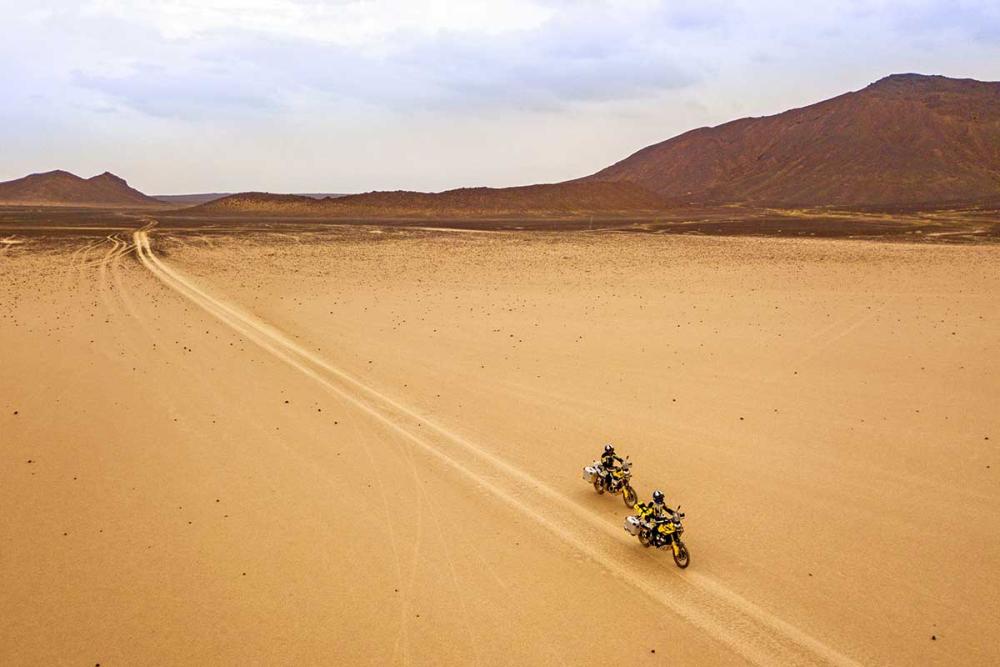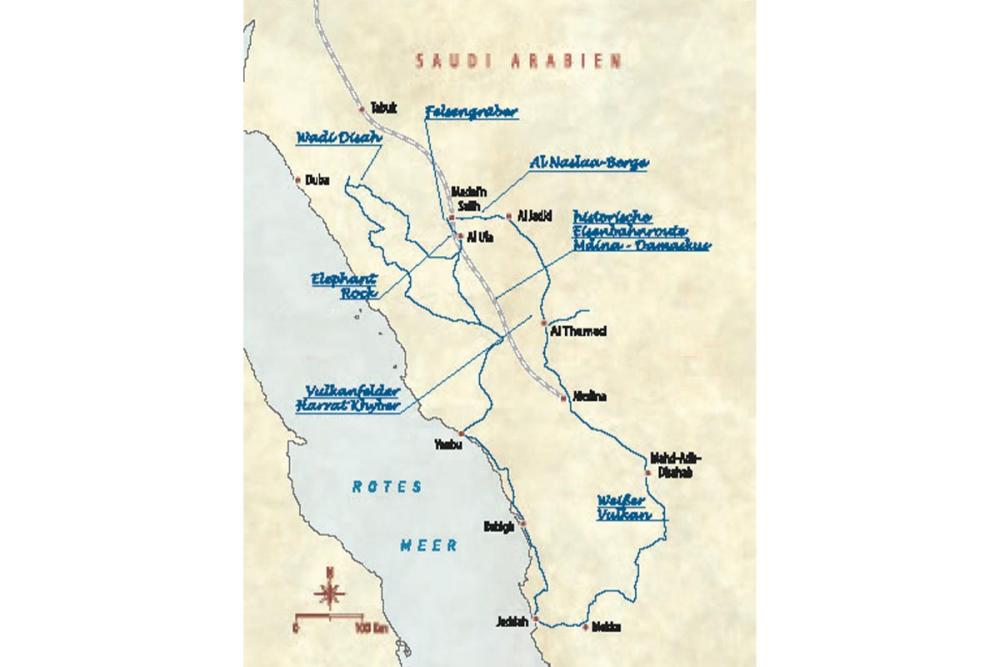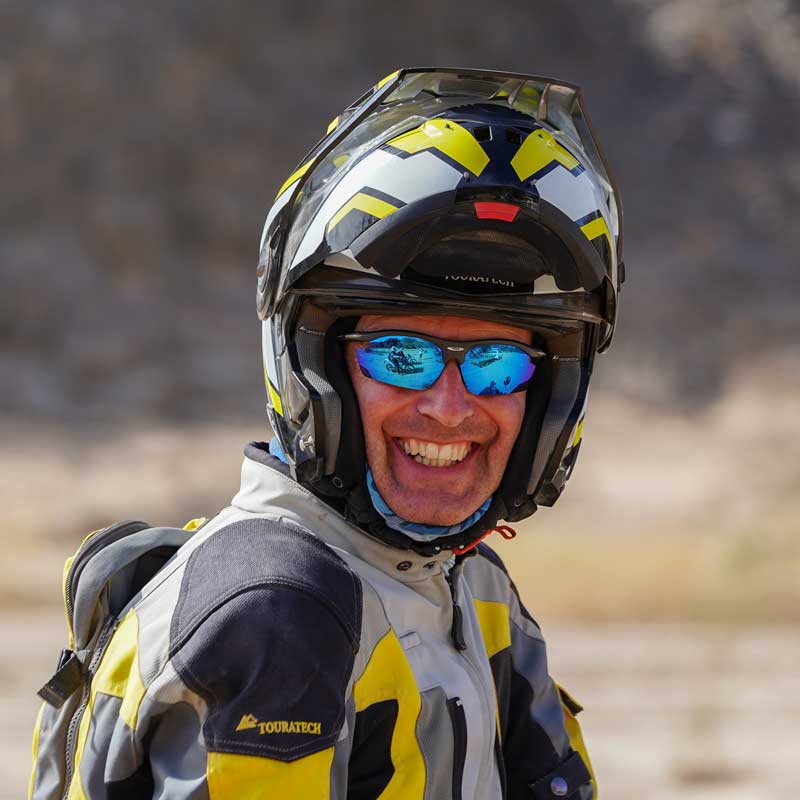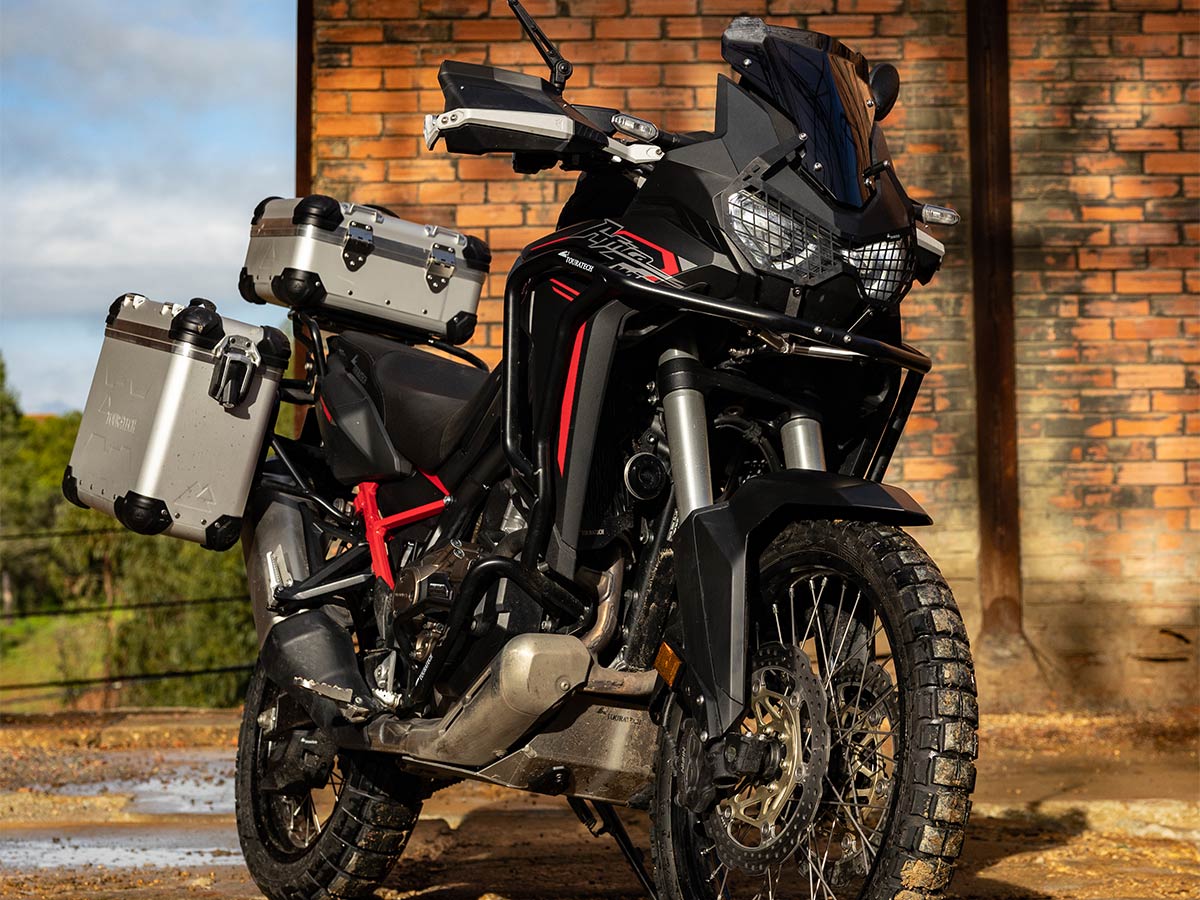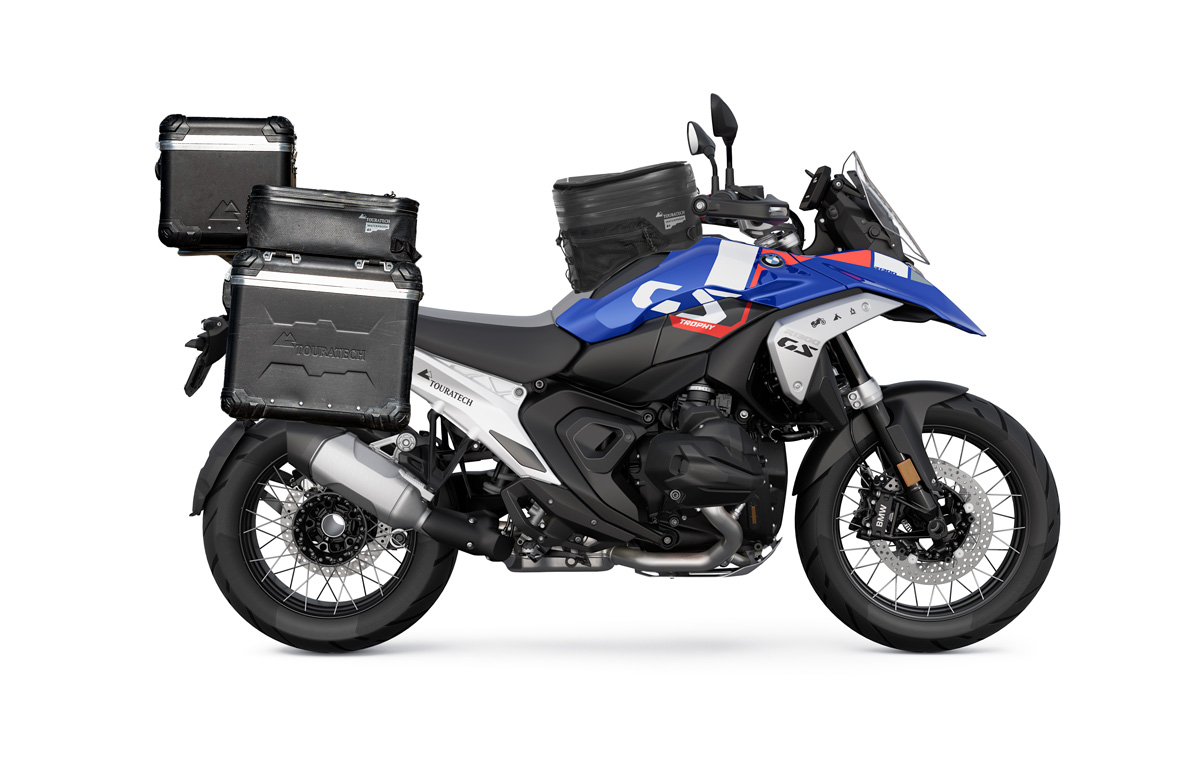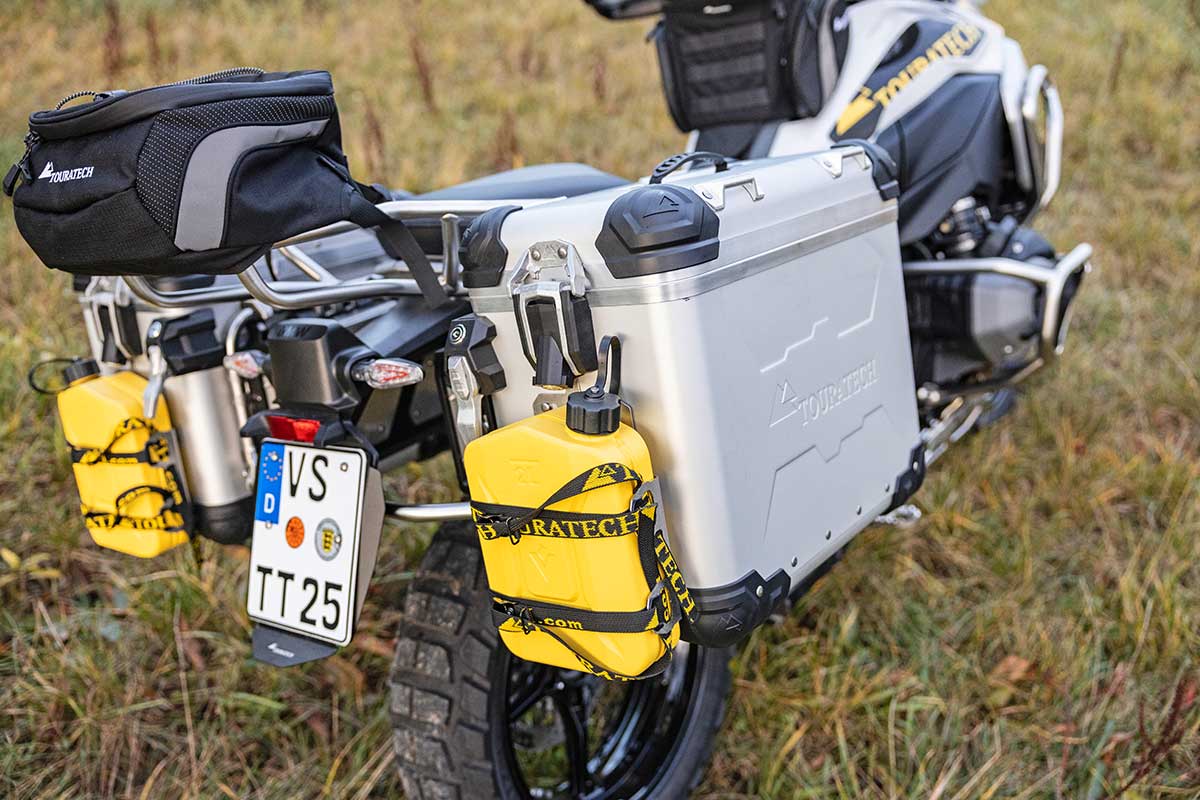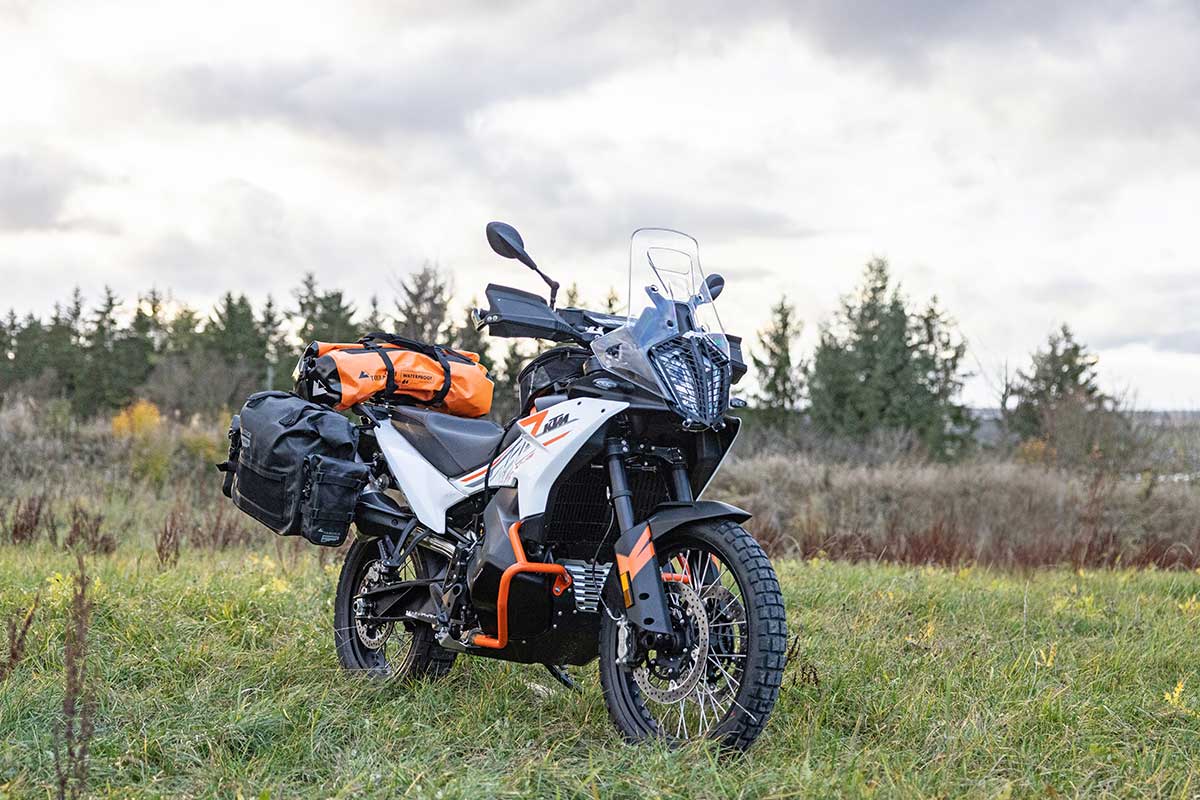Travel | Saudi Arabia - Time travel by Dirk Schäfer
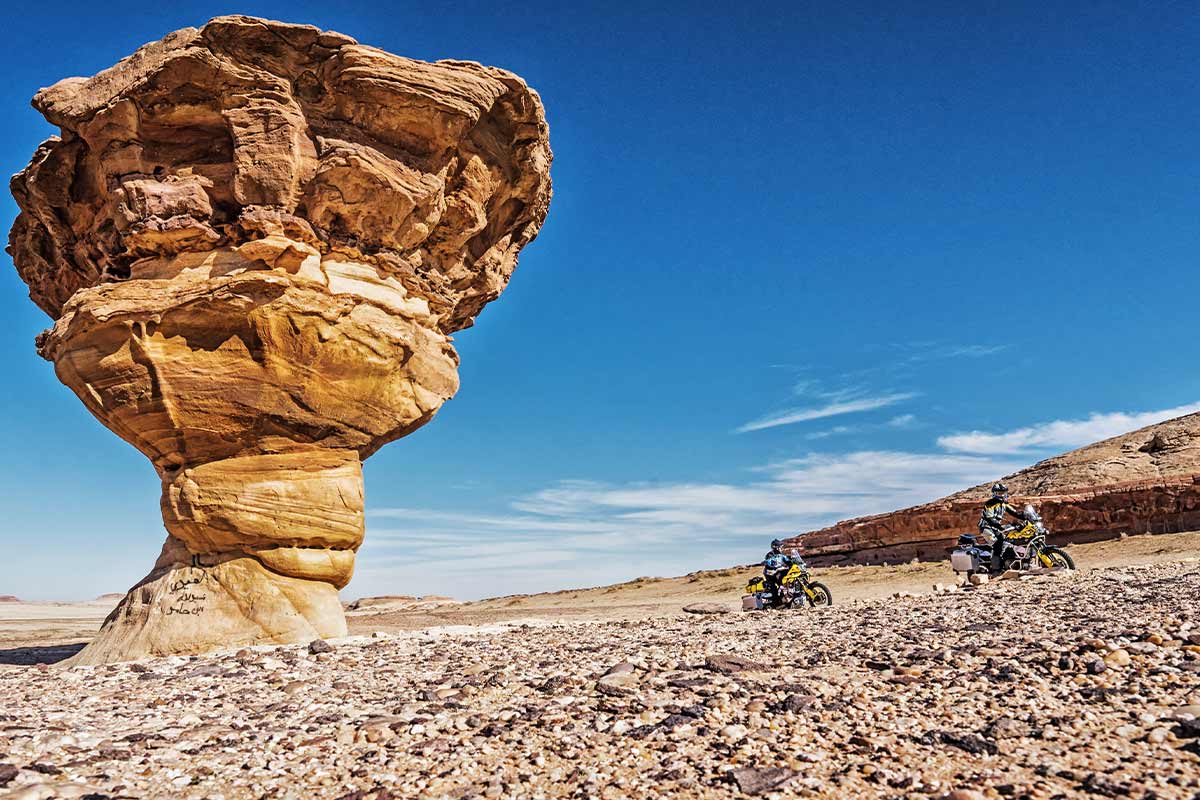
A few years ago, the largest country on the Arabian Peninsula opened its doors to travellers. Many things seem wonderful, some surprisingly familiar. Dirk Schäfer travelled to Saudi Arabia in a world that lives between the day before yesterday and the day after tomorrow.
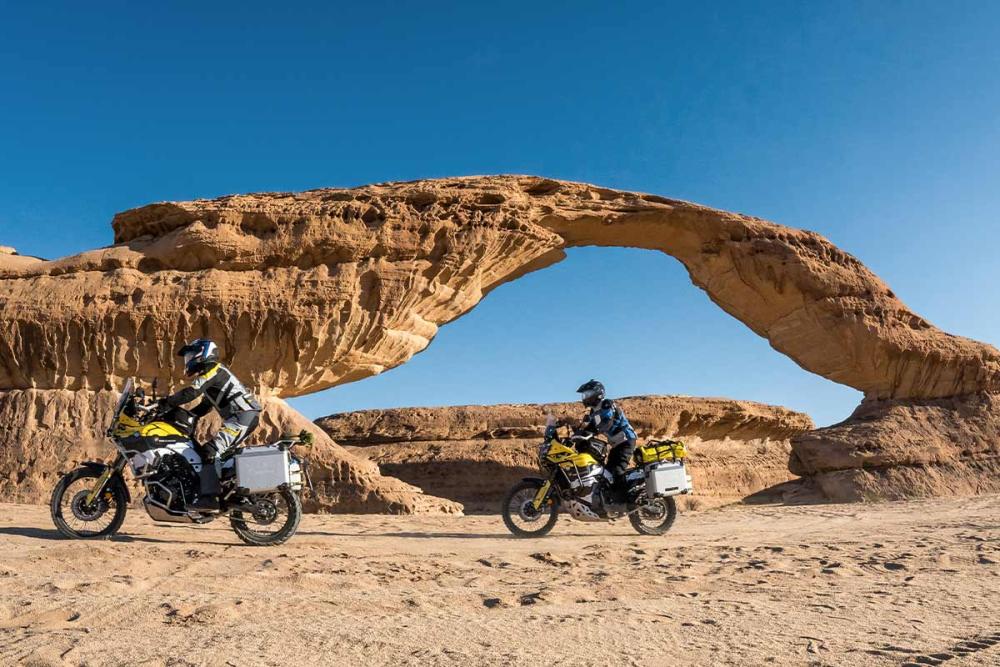
The Rainbow-Arch shows the way.
Second gear, at least 4,000 revs, let the clutch click! The rear tyre spins incredibly, whirling the powder-fine sand metres into the air. The two-cylinder engine screams until the World Raid is up to speed. I can see Jürgen in the rear-view mirror, but he becomes smaller and smaller and can't keep up. I make a loop between the spherical rocks that flank the valley and come to a halt next to Jürgen. "I tried the first gear again. " He laughs and gasps. Just like me. We've been travelling in the coastal mountains of Saudi Arabia for three days now, but the deep sand is still giving us a hard time. Our learning curve is pointing upwards, but it's not as steep as the sand is deep.
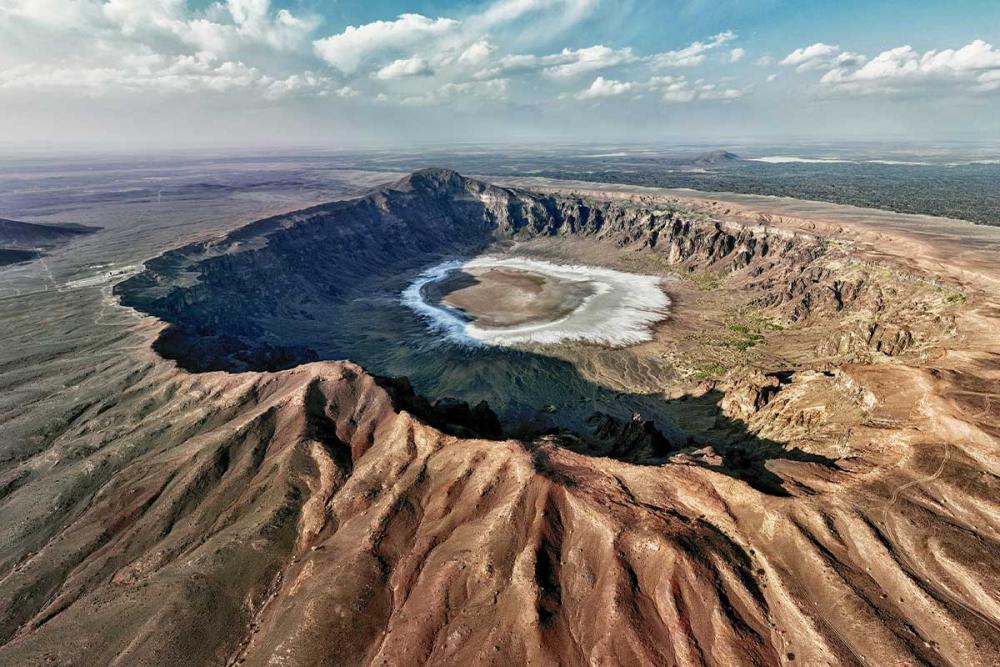
The Wabah-crater.
"I'll help you!" Second gear, plenty of throttle ... and Jürgen's Ténéré is free again. The wind dries the sweat on my back. And I can see the tarmac road ahead. From there, it's not far to a petrol station, a restaurant and a delicious refreshment. But the latter comes sooner than we think. On solid ground, we pump up our tyres to full pressure again. A white Nissan pulls up directly behind us. The driver is dressed in a spotless white qamis, a cotton robe. Cool sunglasses, well-groomed full beard. "Everything ok, guys?" he asks in perfect English. "Where are you from? It's pretty rare to see motorbikes here." "From Germany." "Really? Welcome to Arabia! Have you got enough to drink?" We point to the canisters on our suitcases. "Still, please take two more bottles from me", he says and takes two wonderfully cool bottles of mineral water from the on-board fridge. "And here's my business card. If you need help, give me a call!" A nice coincidence? Yes. But one that happens several times a day. One day we didn't know where to put all our water. It seems that you can't die of thirst in the deserts of Saudi Arabia.
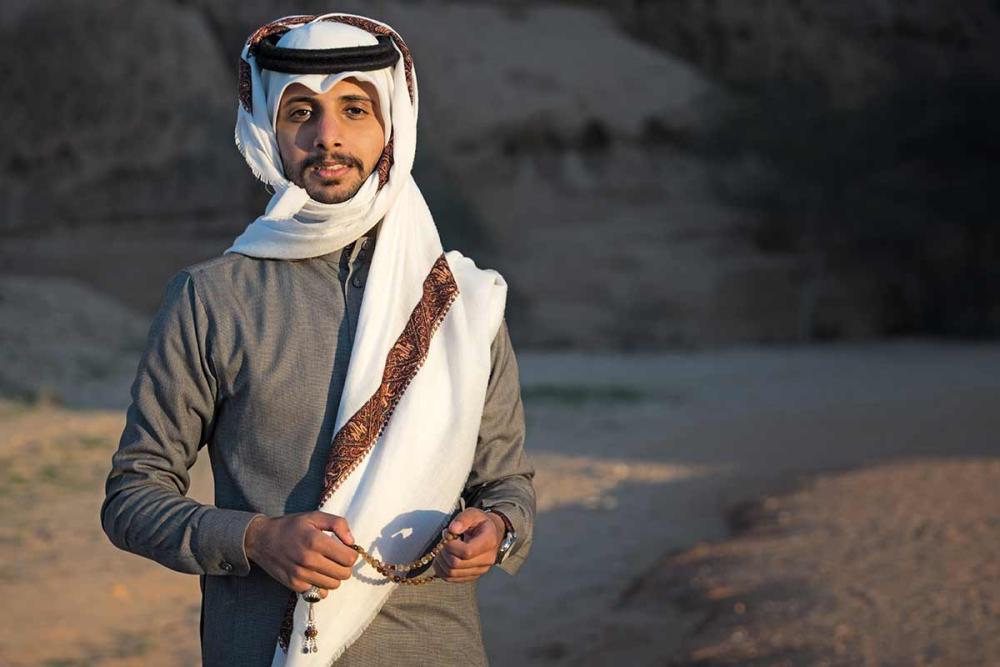
»Do you speak English?« You don’t need to speak Arabic to communicate around here.
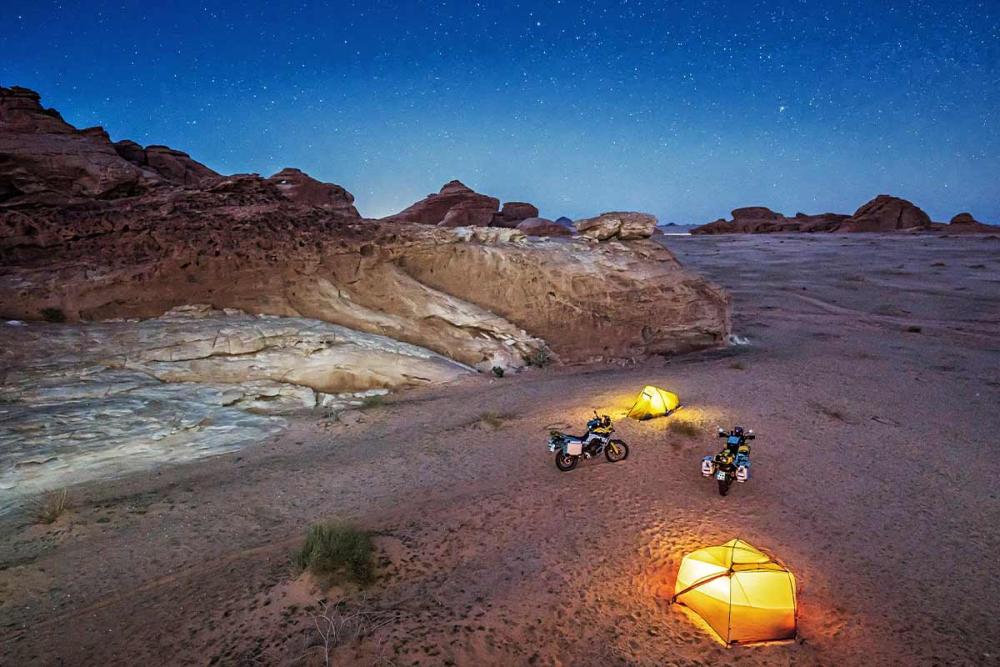
By night in the middle of nowhere between Tayma und Al Ula.
I had already hinted to Jürgen that it might be difficult. And now it will be difficult. But there is also a reward for the effort. But they are not yet in sight. Between all the sand and all the mountains in the country, there are places where Mother Nature has placed curiosities. For example, these mushroom rocks on the way to Al Jadid. They grow out of dunes like the chanterelles which have grown to monstrous sizes in Gulliver's Travels. Just a few kilometres later, a kind of petrified fork is stuck in the sand. So huge that you can drive between the prongs. But the real magic land awaits in the Al Naslaa mountains. Formations that look like a Chinese dragon, a rock that looks like it has been cut in two with a sword and even more mushroom rocks characterise the surreal atmosphere. But the way there leads through deep sand. Will it be easier to drive anywhere?
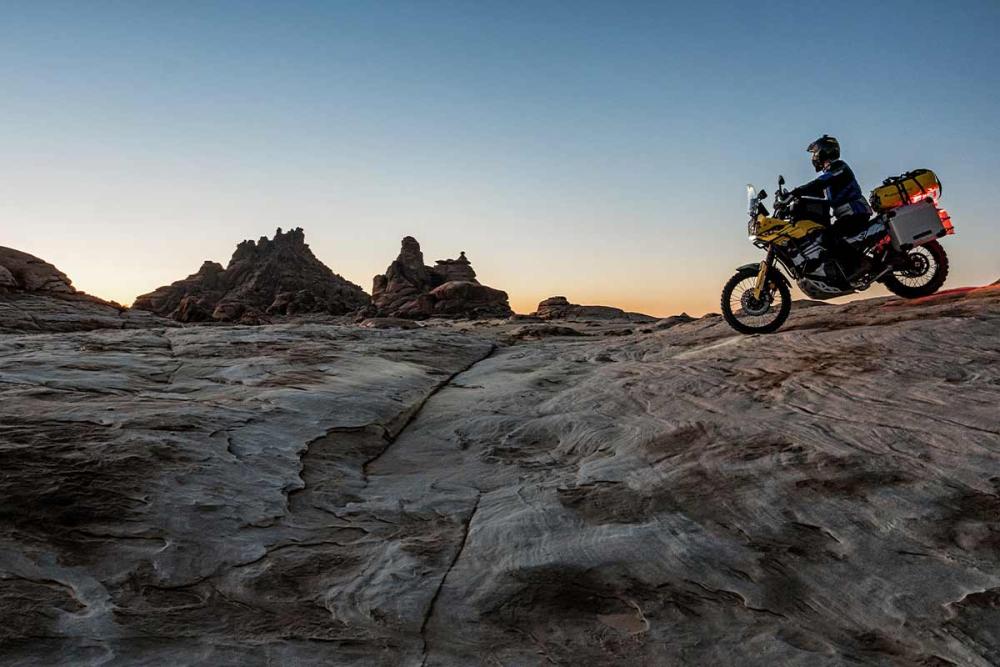
Solid rock in the Al Naslaa mountains.
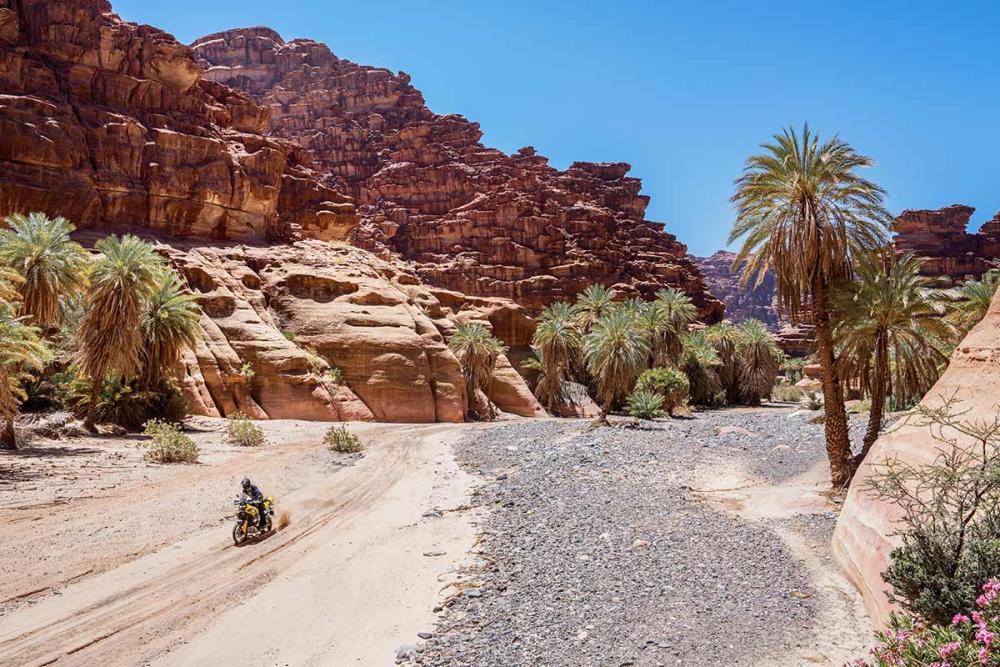
The Wadi Disah offers paradisical perspectives and a hellish track.
Of course! From Madai'n Salih, a tarmac road makes its way westwards. Generous bends sweep through wondrous valleys. But the most magnificent of them is just around the corner. The Wadi Disah. The Wadi Disah is a continuous gorge in a labyrinthine sea of stone. We have no trouble finding the entrance, as we have tarmac under our tyres until the valley narrows into a canyon. But just where the valley becomes a winding bottleneck and we could use that solid black surface, it disappears never to be seen again. The surface immediately changes to supersoft and deeply rutted. I struggle to keep the World Raid on course and myself in the saddle. How much had we deflated the tyre pressure again? Considering the rocky sections, only up to 1.5 bar. More pressure needs to go. I don't care about potential stones now. We stop and deflate the tyres again. Let's see if we can't get to grips with this. And yes, with 0.9 bar the tyres are better. But still not really good with full luggage. And the stones will come. So keep your eyes open!
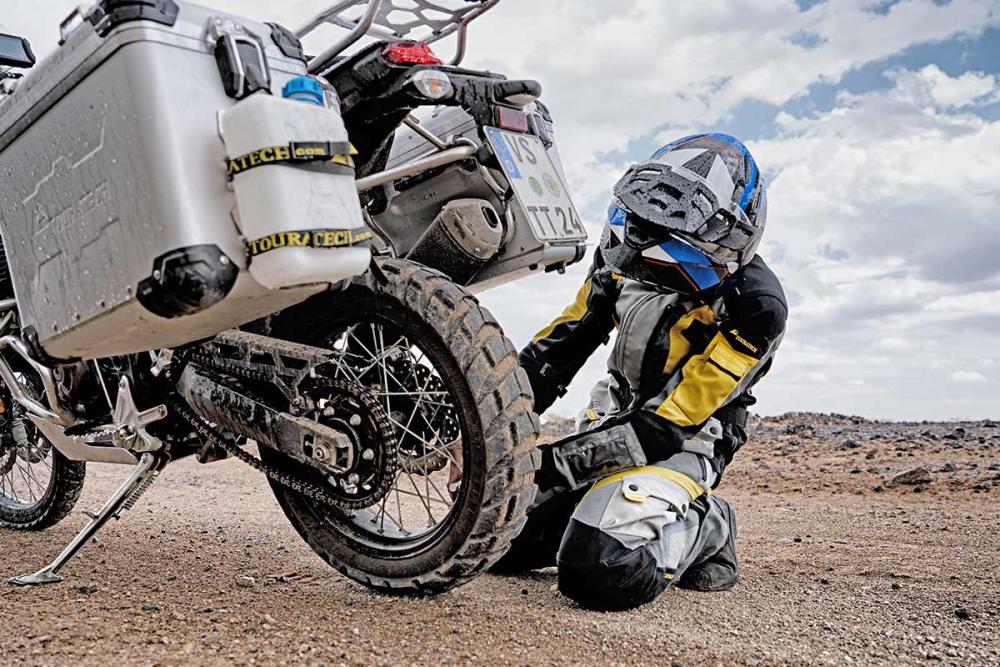
Drop, pressure, drop: 1.5 bar on the hard track.
When the street canyons of L.A. are one day petrified and its skyscrapers are overgrown by magical red rocks, it will look like Wadi Disa. The heat builds up in the windless valley, and palm trees have clumped together in a constant battle for survival, forming small forests of green fronds. Rumble! I'm suddenly back from my daydream on the piste. The front wheel rim has caught something in the deep sand. It doesn't matter what, because the tyre didn't survive the blow unscathed. Flat tyre. And the rim? It still looks good. In the shade of some palm fronds, we set about patching the tyre. An hour later we are rolling on solid ground towards Al Ula. After the sweat-inducing Wadi Disah, the 250 kilometres to the oasis town become a real wellness programme. The World Raid feels like a Gold Wing, the only thing missing is the sound system. To compensate for this, a 360° panoramic projection is offered: Rock towers, jagged mountains, rocky waves. The immaculate road makes its way up to a plateau through this panopticon of erosion. The last rays of sunlight glisten over the scree plain and the first lights of Al Ula can be seen in the distance.
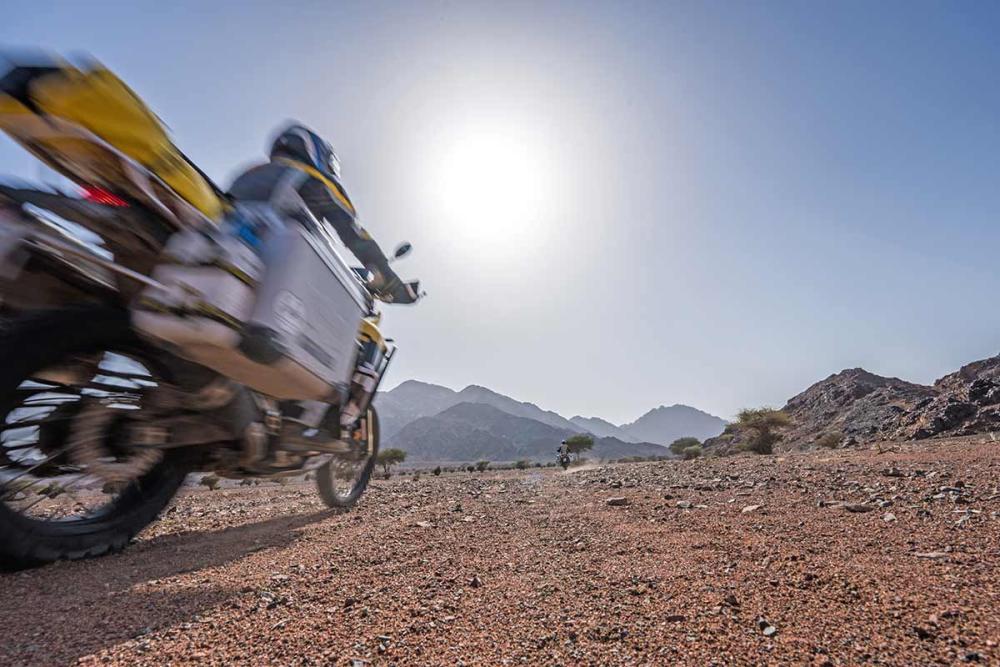
Highspeed track to Al Ula.
We steer towards Elephant Rock, one of the landmarks of Al Ula. An open-air restaurant with lounge flair has been set up next to the rock formation, which is more reminiscent of a mammoth than an elephant due to its sheer size. We sit down in a seating area and order ... chicken burgers, fries and an ice-cold mint drink. Not typically Arabic but just right at the end of the day.
Today we arranged to meet Alex, a friend from France. He rode his Transalp from home to the finish of the Dakar in Saudi Arabia. The meeting point is the petrol station on the outskirts of Al Thamad. We are the first to arrive. But the wait is not difficult. Because almost everywhere in the country there are first-class coffee shops and other amenities such as restaurants, supermarkets and hairdressers in addition to the petrol stations. We have just grabbed a drink when the unmistakable bubbling of the Honda V2 approaches. Alex’s smile is beaming from under his helmet. Seconds later, we are in each other's arms. What a reunion! There's plenty to talk about. But we also need a place to spend the night, because the sun is already low. 80 kilometres east of here there is a promising place, a white volcano. "Will we make it before sunset? " "Oui, bien sûr, yes of course!"
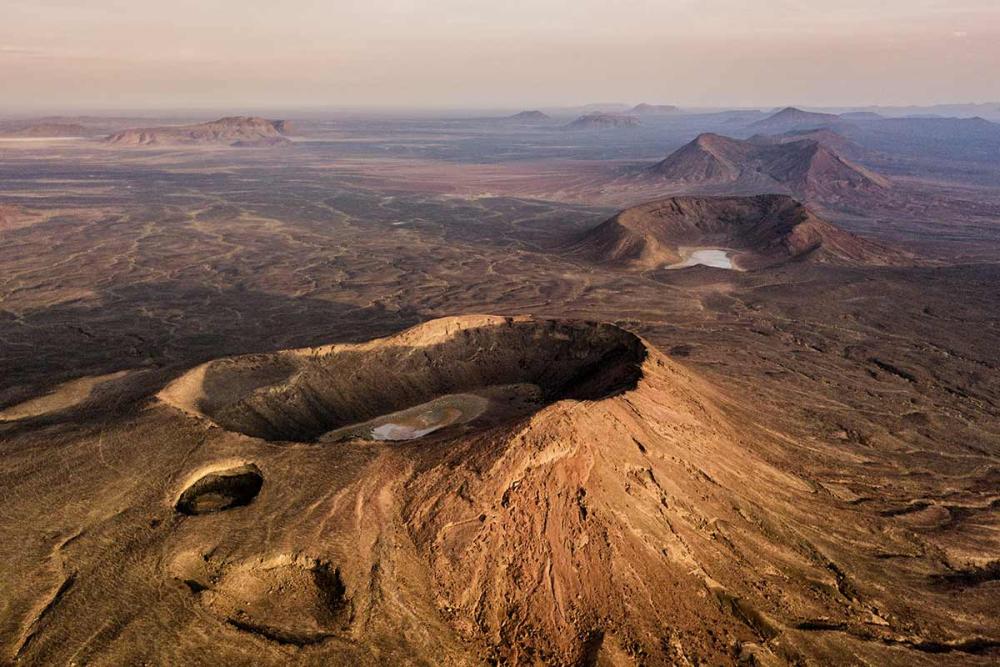
Three of seven volcanoes in a row near Harrat Kishb, which erupted one after the other.
The route climbs slowly but steadily. More and more black volcanic cones rise above the horizon. The white one is nowhere to be seen. At the edge of a field with sharp-edged lava lumps, a track turns off to the right. This must be the track to the white volcano. "Shall we?" Jürgen and Alex nod. The sun touches the horizon and an unpleasant cold presses through our jackets and trousers. We haven't covered two kilometres of the track when a police car comes towards us and forces us to stop. The uniformed man wants to know where we're going. "To the white volcano." First, he tries to talk us out of it, then he changes his mind. He wants us to follow him. He turns round and switches on the blue lights, even though we are all alone in the falling night. We drive in his dust trail until we reach a crater, at the edge of which he stops. He tells us to drive into the volcanic crater, because at least there would be no wind.
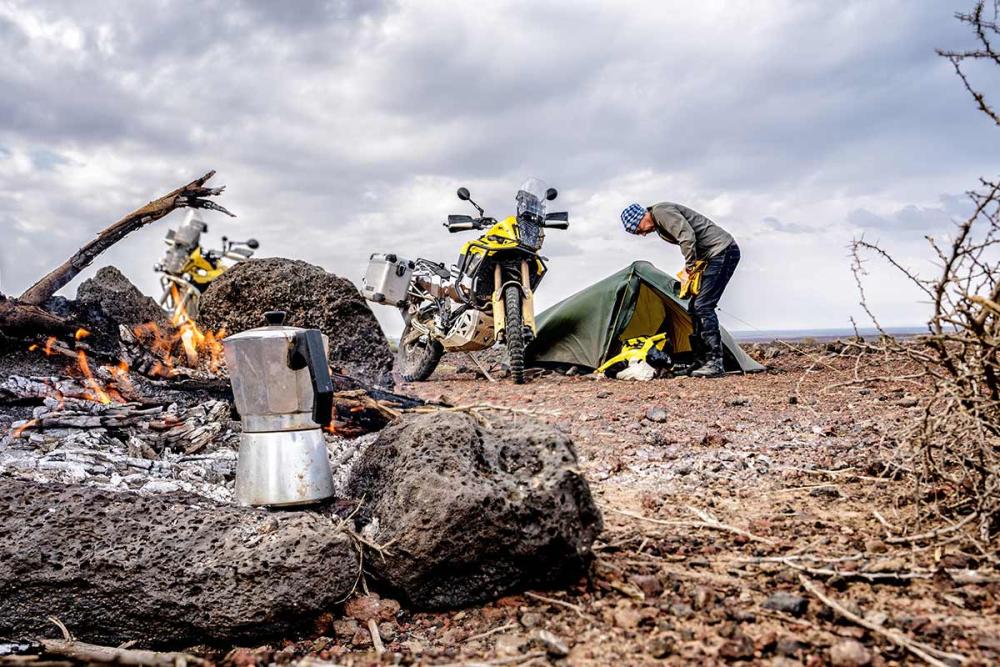
Coffee’s ready! Breakfast time in a volcano field.
There is no wind at night in the crater, but the thermometer still drops into single figures. We wake up shivering. What warms us up? Trying to get out of the mouth of the crater through the lava ash back onto the crater rim. After a few attempts, we succeed and now, from the edge of our volcano, we can also see the white volcano. It is an incredibly surreal sight. But as they say you can also drive up to the white one...
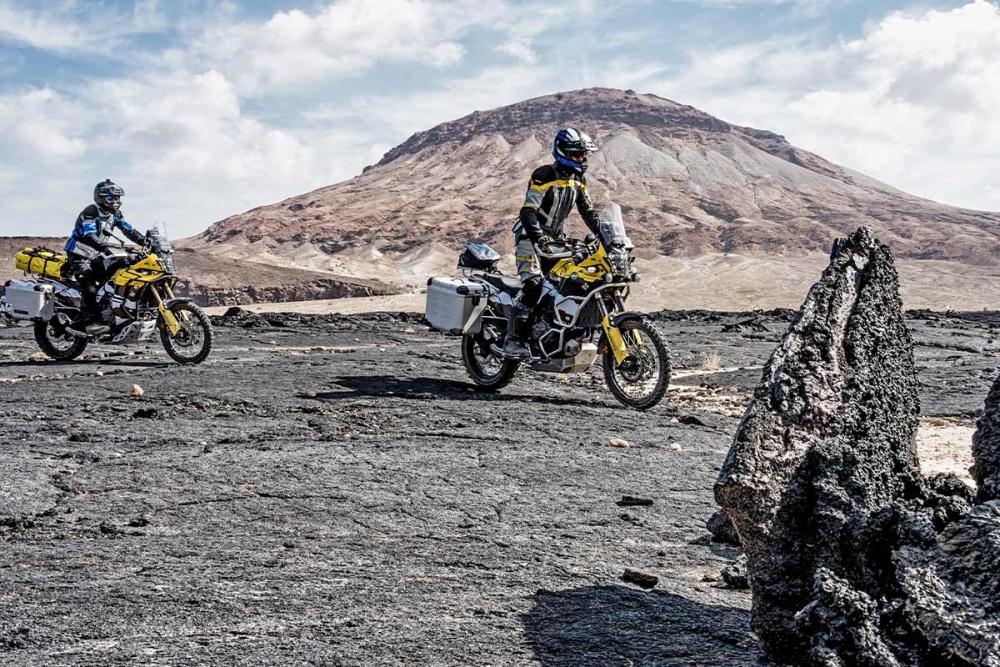
Harrat Kaybar is a volcano field equal to the size of the Saarland.
The track is surprisingly good and winds around several volcanic cones. On the flank of one cone is an oversized pattern of stones. Scientific estimates assume that people created this pattern 7,000 years ago. The reason? It's still a mystery. I stop for a moment and touch a stone in the pattern. It's just a thought, but a strange one: a person placed this stone here. As the area is so remote, there must not have been many people passing by who also touched this stone. Perhaps I am the first after 7,000 years. I shudder for a moment. Touching the stone is like touch-time travel. But with this country, it is definitely a journey through time.
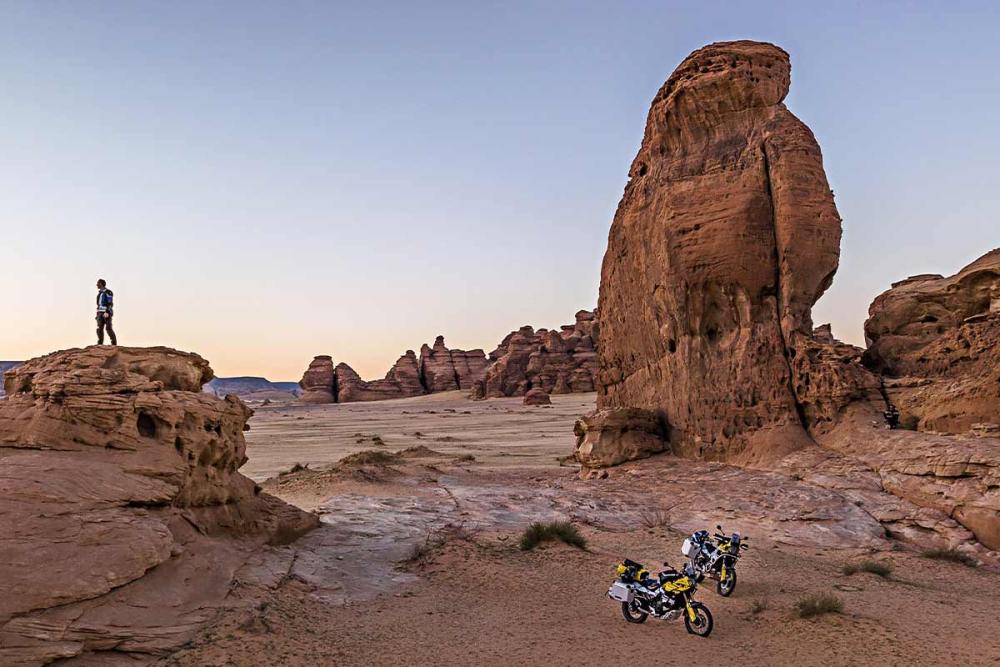
Overwhelming dimensions near Al Buriekah.
Saudi-Arabia
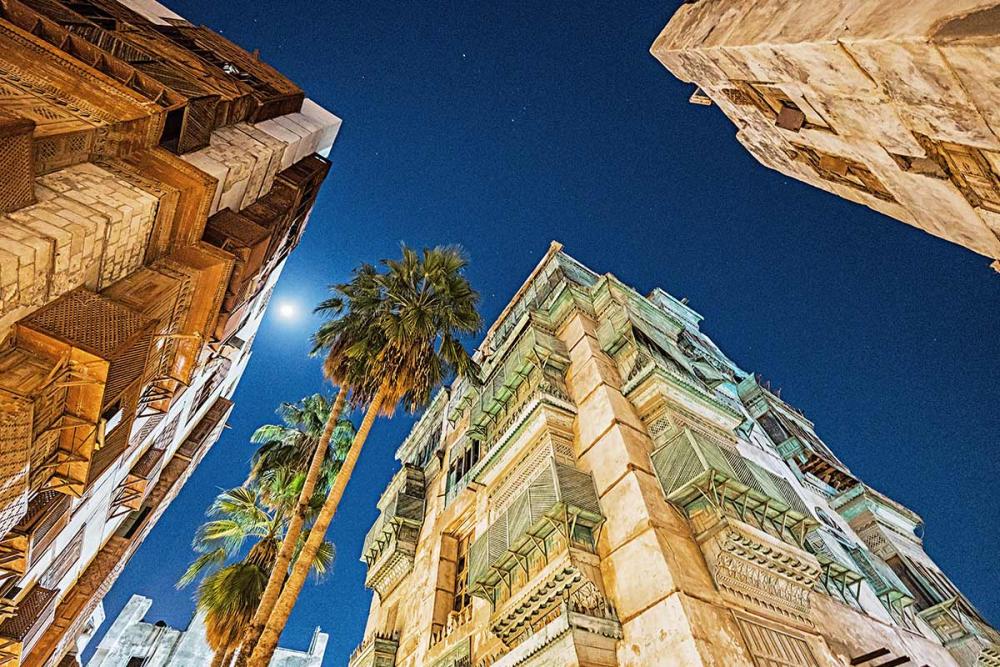
The historic centre of Jeddah is a UNESCO World Heritage Site.
ARRIVAL / ENTRY
Saudi Arabia is well connected to Germany via the major cities of Jeddah and Riyadh. Direct flights take six hours. The low-cost airline Wizzair offers direct flights from Vienna to Jeddah. Tourist visas are available online and are valid for 90 days (www.visitsaudi.com). The visa also entitles you to health insurance for the duration of your stay. If you have plenty of time, you can also travel overland to Saudi Arabia. To avoid Syria and Iraq, you can take a boat from Turkey to Haifa in Israel. The journey then continues via Jordan to Saudi Arabia. Previous visa problems that arose when travelling via Israel no longer exist. Alternatively, shipping to Dubai is also an option. Olaf Kleinknecht from www.in-time.info can provide information on this. Transporting a motorbike directly to Saudi Arabia has proven to be time-consuming. It is easier to rent a motorbike. For example at Saudi Dirt Bike Centre www.saudidirtbikecenter.com in Jeddah. Owner Mishal Alghuneim also offers guided tours through the country. Tours are also offered by Edelweiss Bike Travel. The 16-day tour costs start at 9,500 euros, www.edelweissbike.com.
TRAVELLING AROUND THE COUNTRY
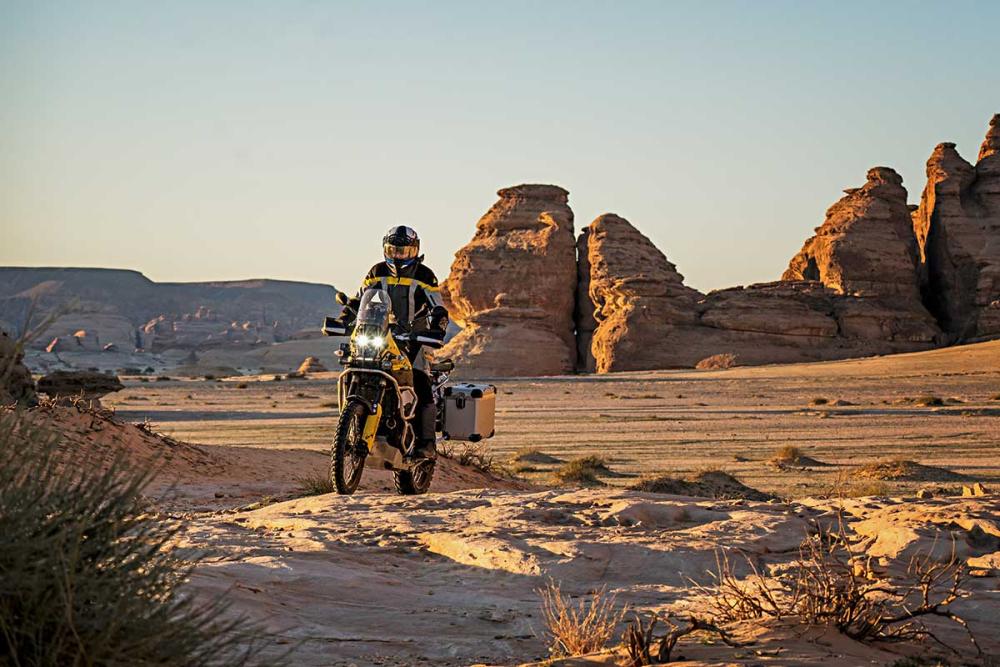
Rock formations near Al Buriekah.
It makes sense to travel to Saudi Arabia from autumn to spring. Our route runs through the varied west of the country and is around 3,000 kilometres long. Two weeks is a reasonable amount of time. The country has a well-developed network of motorways. Speed cameras are frequent. The off-road stages can be very demanding. In the major cities and tourist hotspots, accommodation is available, ranging from good European standard to luxury hotels. Prices are similar to those in Germany. Petrol is significantly cheaper and costs around 0.50 euros per litre.
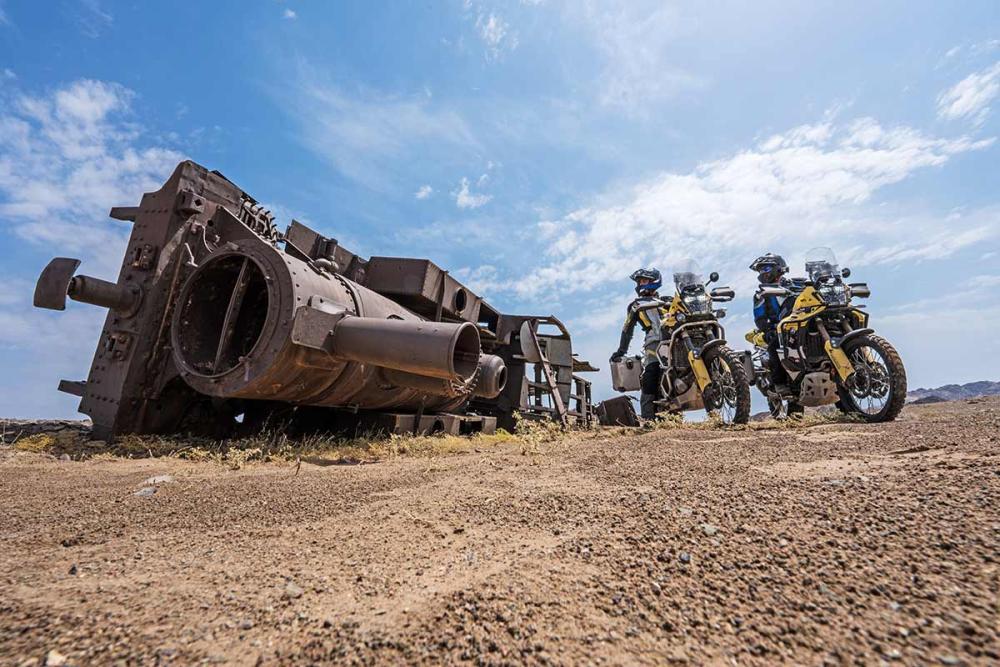
Lawrence of Arabia attacked Ottoman railways during the First World War.
HIGHLIGHTS
Among the highlights of this route is the historical railways track from Medina to Damaskus. The rock-cut tombs of Al Ula are now UNESCO World Heritage Site. The Volcano fields near Harrat Khyber are phenomenal. Jeddah at the Red Sea is a good entry point. This city of 3 million inhabitants offers all accommodation and supply possibilities.
